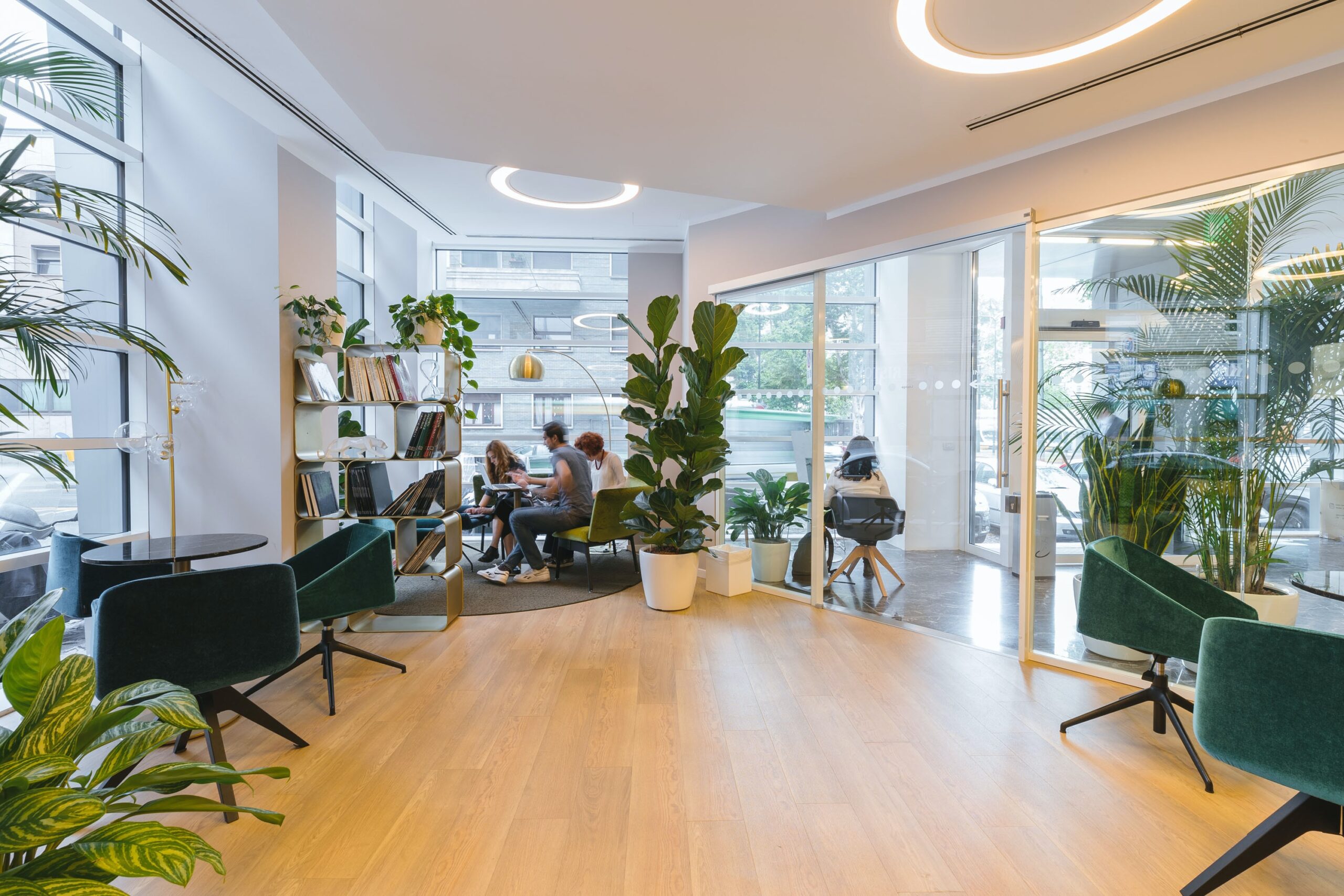Which is most effective, working from home or working in an office? This debate is raging in the working world and doesn’t show any signs of stopping.
For employers, working in an office brings with it the benefits of face to face collaboration[1], yet for employees, working from home allows for far greater flexibility.[2] So, what’s the answer? As much as everyone would love for this to be black and white, the end of the dispute lies in compromise. And it’s a compromise enabled by technology that promotes in-person collaboration without taking away employee autonomy and control.
With fewer office days in a week, it’s essential to make every face to face minute with the team count. Employees don’t want to waste time searching for space in a crowded office, or struggle with inadequate AV setups for hybrid meetings, let alone dealing with no-shows and last-minute cancellations.
A game-changer for office life
It’s time to create a world where the office works for employees, where the chaos of booking resources and finding workspaces is replaced by ease and efficiency. It’s no longer just about reserving a desk or securing a meeting room but about crafting an effortless office experience.
For organisations that implement workspace management platforms, employees get a clear picture of who’s in the office, the resources at their disposal and the best times for collaboration. No more aimless wandering in search of a workspace or a locker. It ensures workers are informed, making each office day productive and simple to navigate.
But the capabilities go beyond simple desks or room bookings. Easy access to popular office amenities—such as the perfect monitor for design tasks, a standing desk for wellness, or a collaborative space for team brainstorming sessions—is made easier. This incentivises office visits and provides organisations with insights into the resources that employees actually use and value, informing future allocation.
This is how we can bring the comfort and flexibility of a home office into the workplace. The visibility and ease of use not only empower employees in their daily decisions but also make the office a place they want to be. It turns the office into a destination, encouraging regular visits and building a more vibrant, connected workplace community.
Effortless team meetings
Yet, the flexibility and freedom of hybrid work come with its own set of challenges, especially when coordinating team gatherings. Planning a meeting in the hybrid era can often feel like herding cats, with inevitable forgetfulness or last-minute changes throwing a spanner in the works. The time has come to transform chaos into order.
Imagine you’re gearing up for a brainstorming session. Gone are the days of endless emails and last-minute scrambles. With the right platform in place, you’re clearly shown the available spaces, each with its specific size, amenities and location. You find the perfect spot, and with a click, it’s reserved for you and your team.
But this doesn’t end with just a booking confirmation. Everyone gets automated timely reminders about the upcoming meeting with clear instructions on where and when things are happening, ensuring no one misses out. In addition, the time slots in the attendees’ diaries are booked out to reduce scheduling conflicts. For the team members who may have doubts about joining, the ability to see when your colleagues are attending the office is the digital equivalent of seeing friends check into an event on social media – they feel that pull to join in, encouraging them to make that leap from remote to in-person interaction.
This approach focuses on enriching the team experience. It creates an environment where meetings aren’t just scheduled—they’re anticipated. By choosing the right space that meets the team’s needs and using technology to keep everyone in the loop, the office becomes a space where creativity, collaboration, and camaraderie thrive.
Winning at work
Creating an inviting office environment goes beyond just making workspace bookings and team meetings easy. With insights into how and when staff prefer to use office spaces, organisations can tailor events and activities to match these preferences. This could mean scheduling lunch and learn sessions, guest speaker talks, workshops, or hackathons at times when they’re most likely to be well-attended and impactful.
For some organisations, incorporating gamification would introduce a fun, competitive element to office attendance. They could set up a system where employees earn points for each day in the office. These points could then be redeemed for tangible rewards, creating a leaderboard that tracks and rewards office presence. Such an approach would draw people in while building a community feeling at work.
The key is to understand what employees need and value and actively engage them through feedback loops. This way, organisations can align office life with the real interests and schedules of their workforce, making the office more than just a place to work.
The challenge ahead
Striking the right balance between in-office collaboration and remote flexibility is crucial. In this respect, technology isn’t simply facilitating a compromise between working from home and the office. It’s redefining the purpose and value of the office itself.
By providing clear insights into office attendance and resource utilisation, workspace management software empowers organisations to create a dynamic, responsive, and employee-centric work environment. It’s about enriching the office experience, making it a place where employees want to be, not where they have to be.
Moving forward, the challenge will be to use this technology to its fullest potential, ensuring the office remains a hub for innovation, collaboration, and community. The future of work is hybrid and with the right tools and mindset we can create a work environment that is flexible, efficient and, above all, geared towards employee wellbeing and productivity.
[1] https://www.businessinsider.com/companies-making-workers-employees-return-to-office-rto-wfh-hybrid-2023-1
[2] https://www.peoplemanagement.co.uk/article/1826848/majority-employees-ready-walk-companies-not-embrace-hybrid-working-report-reveals









